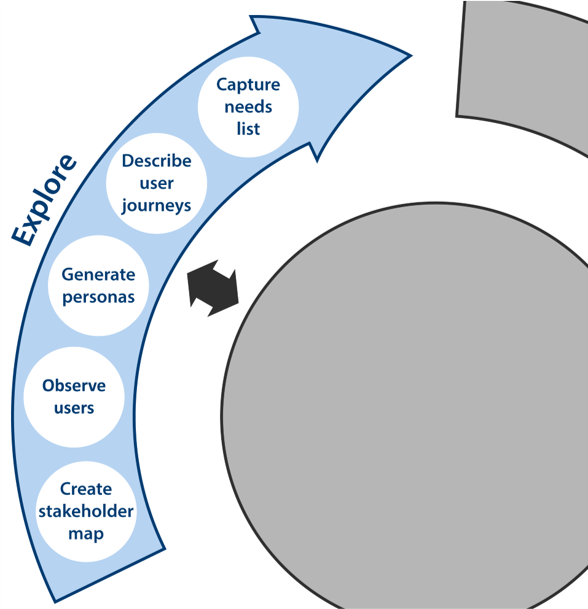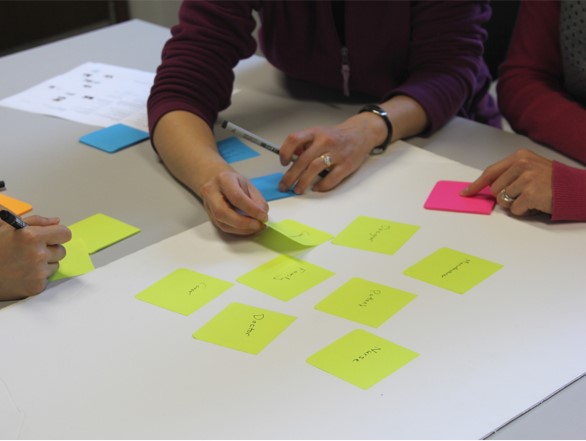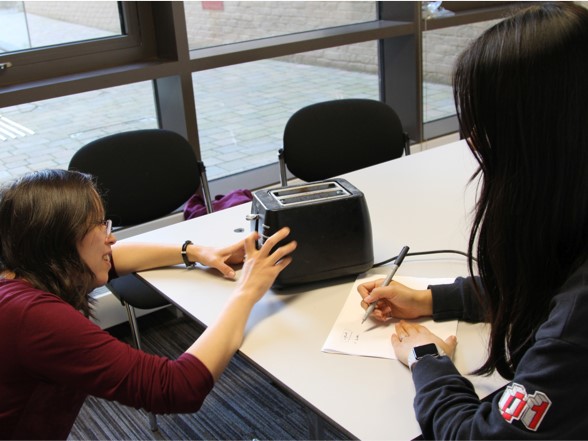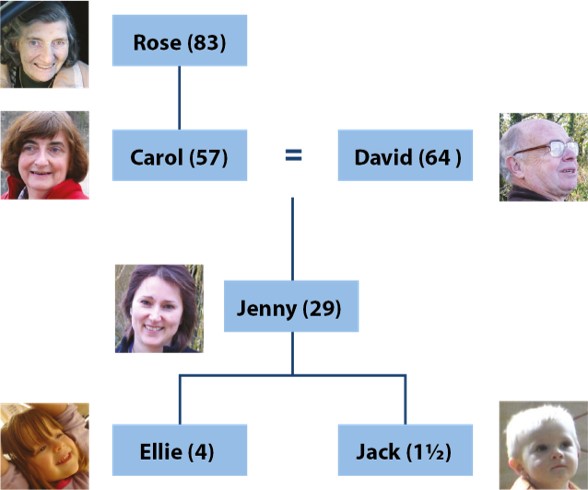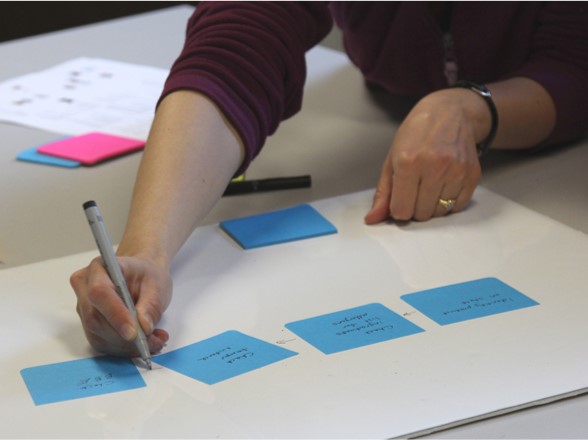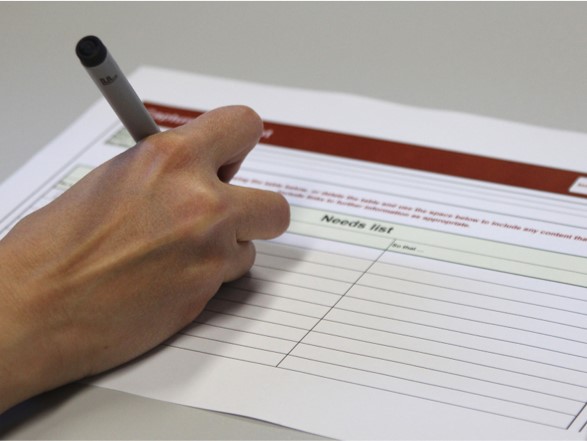This page describes activities within the Explore phase of the design cycle. These activities can provide a deeper understanding of the criteria that the product needs to fulfil. These include the needs of all of the stakeholders, including the end-users of the product. The activities help to build this understanding and then draw the findings together.
On this page:
Explore activities answer the question ‘what are the needs’. Go to full map
Create stakeholder map
A stakeholder is a key player who has something to gain or lose from the product. Missing the needs of any of the stakeholders could result in the product failing. A stakeholder map helps to identify all the different stakeholders, and to understand the relationships between them. Stakeholders have an impact across the development, sale, use and support of a product.
The purpose of a stakeholder map is to show all the key players who will contribute to the product being successful. This helps later when trying to capture all the needs that the product should fulfil, especially ensuring that both user and business needs are considered.
The activity ‘Generating personas’ (later in the Explore phase) can help to bring stakeholders to life, which is especially useful for stakeholders that the design team find difficult to relate to.
Further information
Stakeholder maps are commonly used in other domains, such as project management. The guidance and examples from these domains can also be helpful in inclusive design. For example:
- The Mind Tools website has a section on Stakeholder Analysis with more detailed guidance on creating a stakeholder map and some examples of stakeholder groups to consider.
- The website stakeholdermap.com also provides detailed advice on stakeholder mapping and analysis.
Observe users
User observation is about uncovering what people really want, what they really need, and what they really do. Observing actual behaviour is vital because people often struggle to clearly articulate their real needs because they:
- Have poor awareness of their own habits and practices
- Change what they say depending on what they think the interviewer wants to hear
- Cannot imagine all the possible alternatives to the current situation
Focusing on real user needs helps the design team avoid overloading the product with every feature that the design team wants or thinks the users want.
User observation helps with other Explore activities, as well as with refining the product goals. It should be complemented with other methods to uncover user needs, such as interviews, questionnaires, diary methods and focus groups. Anthropometric, ergonomic and capability data can also supplement user observation to provide insight into user diversity. See the About users section for further information.
Further information
- The Usability Net website has a section on User observation, and another on Contextual Inquiry.
- Holtzblatt and Beyer(2016)’s book ‘Contextual Design (2nd edition)’ provides information on Contextual Inquiry. This is a related method, in which users are interviewed in the context in which they would use the product. (Published by Morgan Kaufmann).
Generate personas
Personas are character descriptions of key stakeholders, usually accompanied by a photograph. They are particularly useful for stakeholders that the design team find difficult to understand, such as the users. The purposes of personas are to:
- Help the project team to empathise with the users and other stakeholders
- Focus the team on users and their needs, rather than trying to add in as many features as possible
- Summarise user diversity by providing a set of personas covering a range of users and contextual factors
- Assist with the evaluation of concepts and ideas by encouraging the team to think about how the personas would respond to them
Persona descriptions should be representative of larger groups of users. They are particularly relevant to the business if they are created to represent different market segments.
This toolkit includes two example sets of personas: A family set of personas was produced as a training tool for inclusive design. A second set of digital personas was developed based on survey data and shows how digital experience, digital interface competence and attitudes towards technology vary within the UK population.
An example set of personas is available from the Tools: Personas page of this toolkit.
Further information
- Cooper (1999)’s book ‘The inmates are running the asylum’ introduced personas as a practical design tool. (Published by SAMS Publishing).
- An online article by Goodwin (2008): Perfecting your personas discusses how to improve persona descriptions. Note that the advice may need to be adapted for an inclusive design project, where the variety of user needs and abilities may have greater importance. (Published in Center Centre — UIE.)
- An online article by Head (2003): Personas: Setting the Stage for Building Usable Information Sites also contains useful information on developing and using personas. (Published in ONLINE magazine)
Describe user journeys
A user journey is a step-by-step description of a user’s interaction with a product. It also describes what the user does immediately before and after using the product, as this provides some context of use. It should consider purchase, initial use, getting support and dealing with the end of the product’s life, as well as ‘normal’ product use.
A user journey helps the design team to understand the user experience and helps to ensure that the needs list is complete.
User journeys should ideally be constructed by ‘Observing users’ (see above). The journeys can be described by writing down each user action and are further enhanced by the addition of photographs.
When specifying a particular user journey it is important to record any assumptions. These include assumptions about the product, the users, their goal, their location and the initial state of anything that would affect the user journey.
Further information
- Kirwan and Ainsworth (1992)’s book ‘A guide to task analysis’ describes Task analysis. This is one method of examining user journeys in terms of the tasks that user performs in order to use the product. (Published by Routledge and CRC Press)
- The Usability Net website has a section on Task analysis, which gives further information on this method
Capture needs list
A needs list is used here to refer to a comprehensive and categorised list of the user and business needs that the design solution should satisfy. Each need can be captured with a statement in the form:
As a ...insert role description... I need ...insert need description... so that ...insert reason...
The purposes of the needs list are to:
- Provide a link between the requirements of the design project and the needs of the users
- Enable prioritisation of needs, based on the outcomes that they enable or prevent
The other activities on this page provide stimulus to help ensure that the needs list is complete and correct. At the highest level, the needs list should be able to answer questions like ‘what constitutes success of the business? ‘ and ‘what do the users want to achieve? ‘. These high-level questions should also tie in with Management activities, such as refining the product goals.
Further information
- An online article: 10 steps to successful requirements gathering describes some of the principles behind requirements gathering. This is closely related to building a needs list. (Published by Phase2)
Feedback
We would welcome your feedback on this page:
Privacy policy. If your feedback comments warrant follow-up communication, we will send you an email using the details you have provided. Feedback comments are anonymized and then stored on our file server. If you select the option to receive or contribute to the news bulletin, we will store your name and email address on our file server for the purposes of managing your subscription. You can unsubscribe and have your details deleted at any time, by using our Unsubscribe form. If you select the option to receive an activation code, we will store your name and email address on our fileserver indefinitely. This information will only be used to contact you for the specific purpose that you have indicated; it will not be shared. We use this personal information with your consent, which you can withdraw at any time.
Read more about how we use your personal data. Any e-mails that are sent or received are stored on our mail server for up to 24 months.


